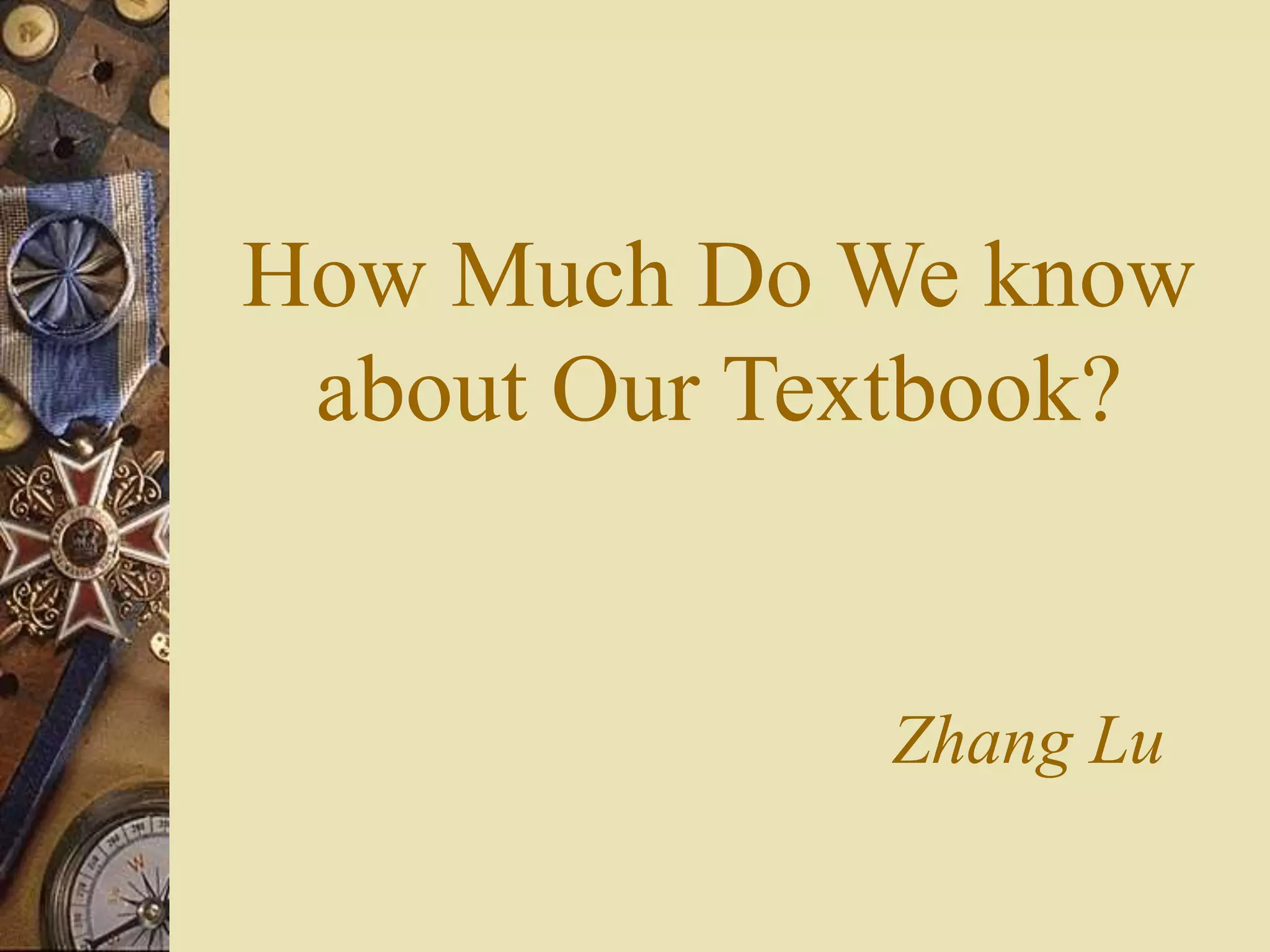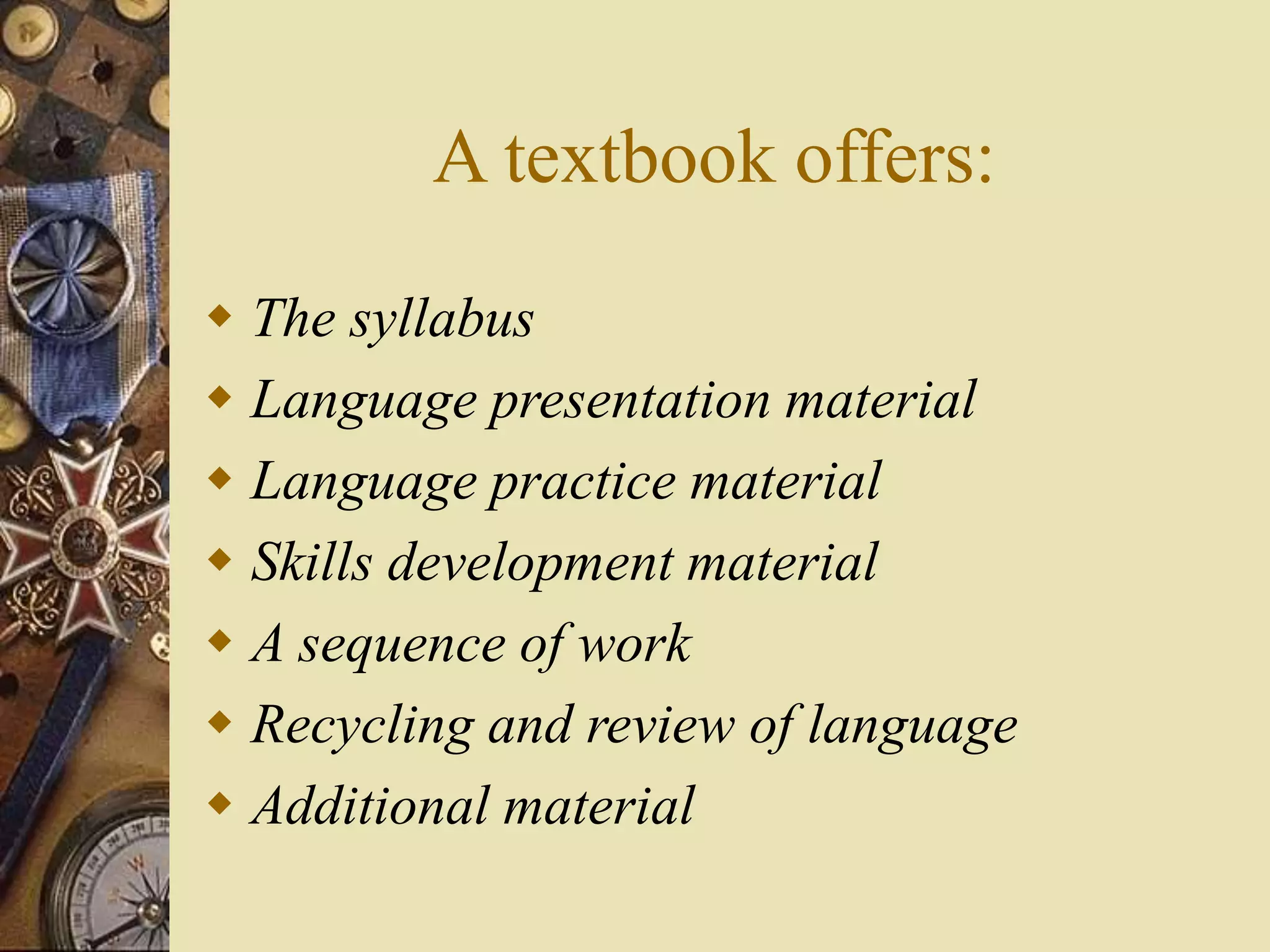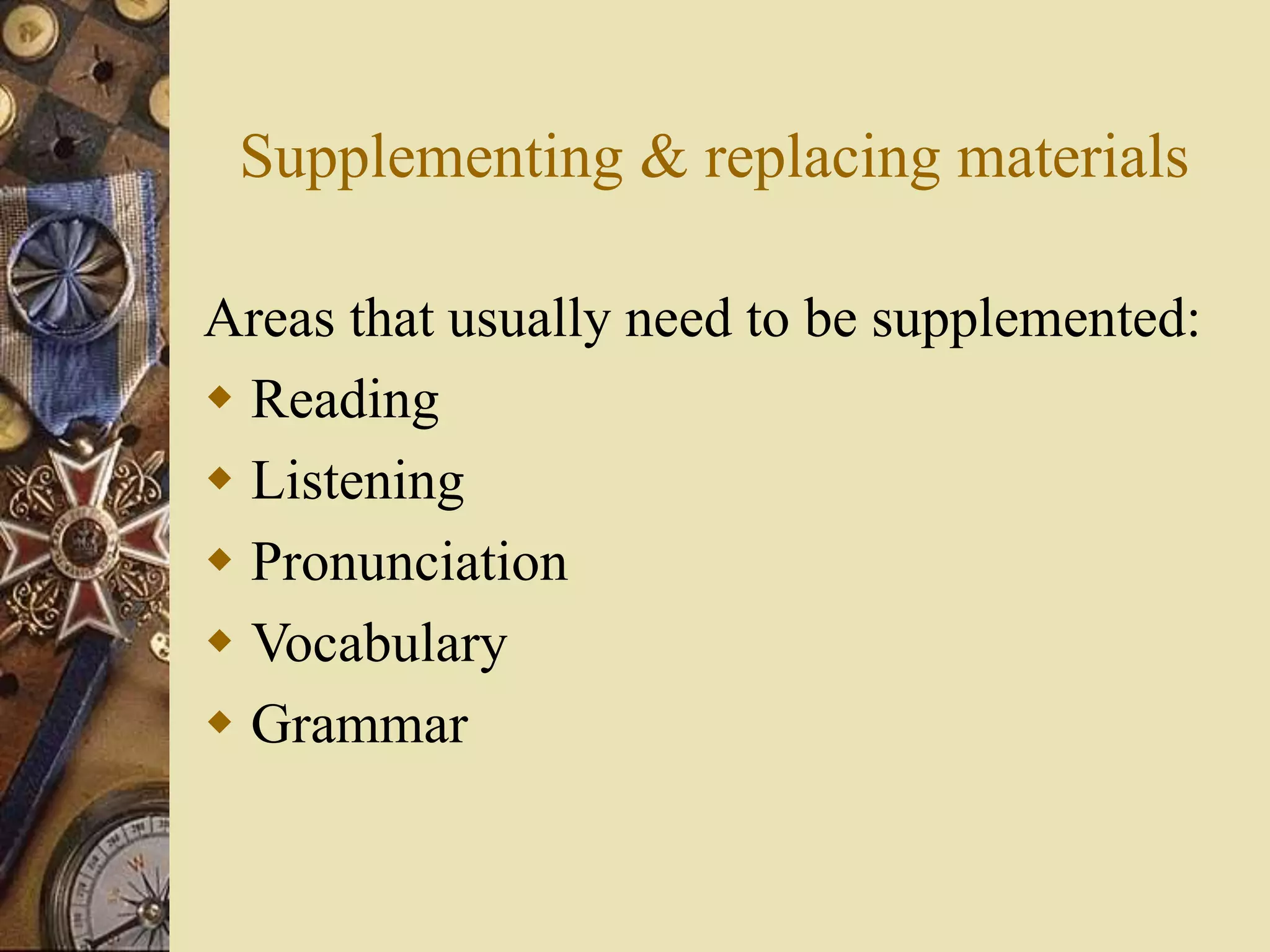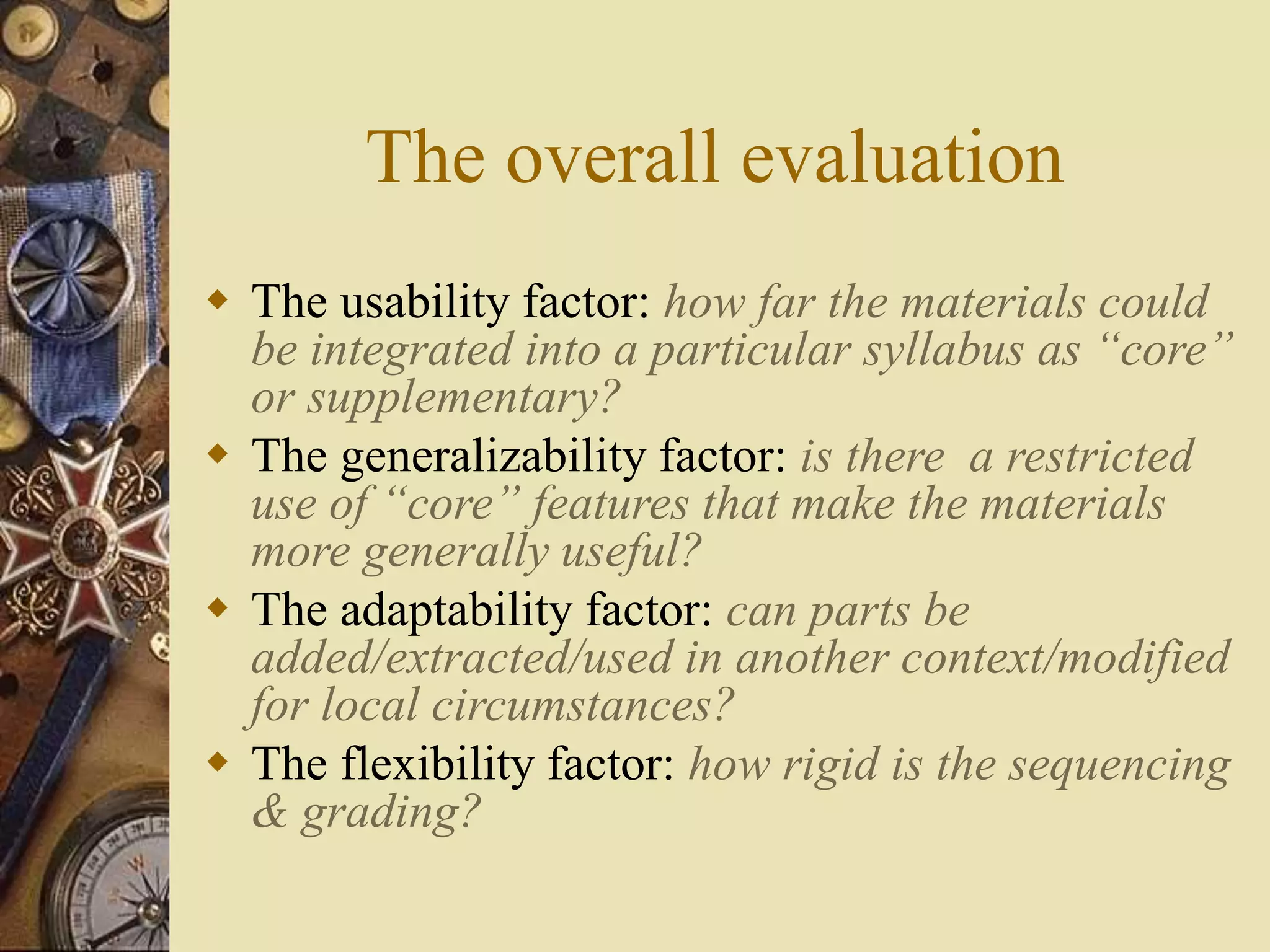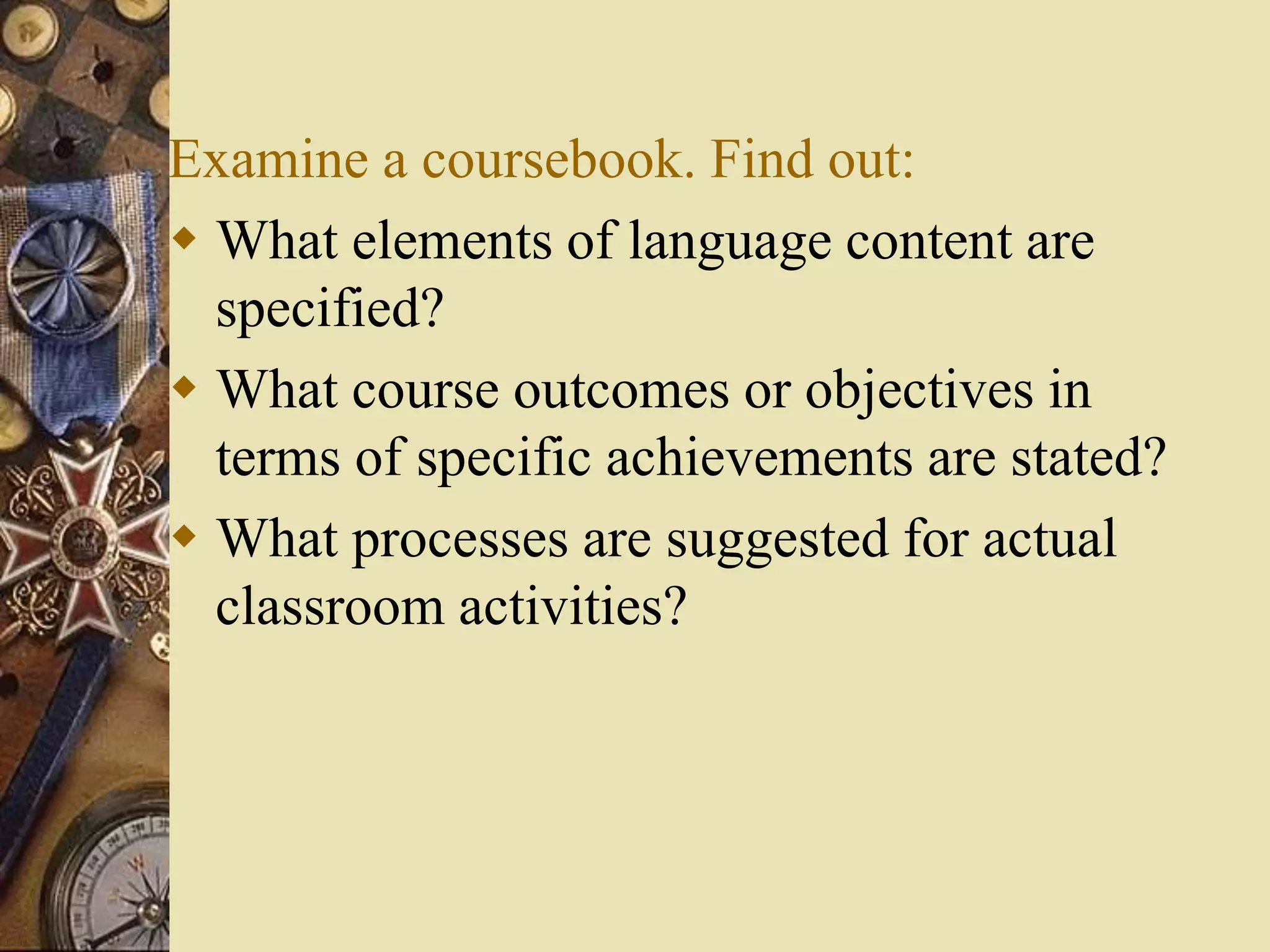This document discusses the relationship between teachers and textbooks. It presents different perspectives on textbook usage: some teachers create their own materials, some follow the textbook strictly, and some use it as a guide. A textbook provides structure, language content, and skills practice, but teachers must adapt materials to meet students' needs. Factors like a school's environment and students' expectations can influence how dependent teachers are on textbooks. Teachers can supplement, replace, reorder, or omit textbook content to better achieve learning objectives. When evaluating textbooks, teachers should consider students' language goals, learning processes, and intended language uses.
